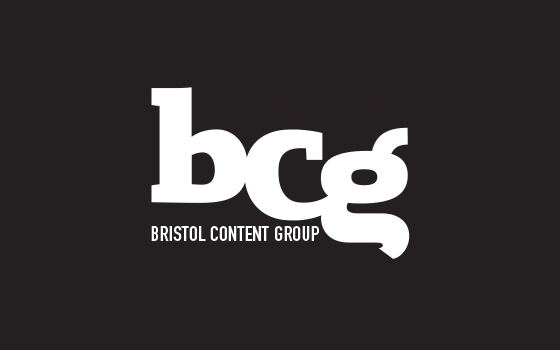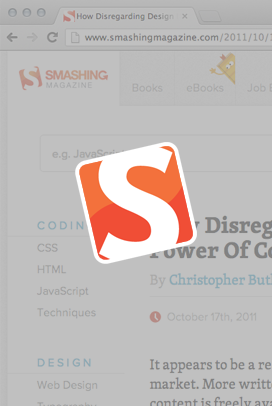When planning a website, it is easy to get caught up by focusing on two major goals that often contradict each other: getting as much content on a page as possible, and by all means, making sure that content is above the fold. I suspect that the common fear of the fold is often supported by statements like the following:
One of the most important aspects of Website Usability is keeping content above the fold so users are not scrolling up and down your web pages. This is absolutely essential when it comes to the home page. People just don’t scroll on the home page.
To be fair, the article from which I pulled this quote goes on to make some very valid and important points. However, it is imperative that we take advice like this in the appropriate context and with a hefty grain of salt.
Stay Informed to Reduce Fear of the Fold!
> Read Blasting the Myth of the Fold, or listen to the podcast.
> Read ClickTales study of scrolling habits.
> Read how browser display statistics are on an upward swing.
It is certainly debatable whether users will or will not scroll. If it were true that users are adamantly opposed to scrolling, one would have to consider how many of the most popular sites get away with being so long (the majority of Alexas top ranked sites require scrolling). Granted, most of these sites place the most important links, tools and utilities at the top of the page, but much important content still resides below the fold. In fact, what these well designed sites demonstrate is a deliberate prioritizing of content and thoughtful information architecture, not an emphasis on cramming everything above the fold. Of course, most of these sites are utilities that have become wildly popular by offering powerful and reliable services free of charge. They dont need to worry about attracting users like the rest of us do! But, this goes to show that the rule of keeping content above the fold so users are not scrolling up and down your web pages no longer applies to many types of websites; from news sites, blogs, Facebook profiles, YouTube, or Wikipedia, users will very willingly scroll. Perhaps, then, the rule still applies to the rest of the internet? Im not so sure. I actually think that any website, no matter what its purpose, could learn a thing or two from some of the big popular sites that dont seem to worry about the fold.
In his excellent book, Dont Make Me Think, author Steve Krug dedicates the entirety of Chapter 7 to home pages. The home page is often the page where the fear of the fold rears its ugly head, so for the sake of this discussion, Im going to talk mostly about it rather than sub-pages. Krug discusses what I think are the most important functions of the home page, which generally are identifying the website and its purpose, establishing trust, and providing functionality that will aid the user in getting the value the site proposes to offer. If content does not support these goals, it should not be on your website, let alone above the fold! Of course, this is much easier said than done. As Krug points out well, the home page is valuable real estate and everyone wants a piece of it.
On that note, a bit of a digression is in order. Ads. Personally, I have no interest in online advertising and am not convinced in the slightest that banner ads do what they are supposed to do. However, I do suspect that they could be a significant barrier to what your home pages goals are. If they are big enough, they will push down your content to make room for their greedy selves. Consider it this way: you are moving your content out of the way to make room for someone elses content- so it better be worth it! Now, if they are not hurting you by pushing your content out of the way, they are also probably not helping you build trust with users (that is, if they even notice them). Just in case you were wondering, CNN.com can get away with losing almost 100 pixels of vertical real estate to advertisers because they have designed their homepage to supply the most critical info (their main navigation, lead story, 15 latest news stories, and video links) above a fairly shallow fold even though there is plenty of important info below, and oh yeah, because they are CNN. Since youre not as huge as CNN, youre just going to have to be a little smarter.
The key to dealing with the fold is prioritizing your content. The more content you have, the less likely it will be to get it all above the fold (and remember, the fold is different depending upon the users vertical screen resolution, so we could be talking about anywhere from 1200 pixels to 600 pixels). If there is an element, whether some copy, a link, an interactive element, or anything else that is critical to the users experience of your website, it should probably not be below the fold if you can help it. The key is evaluating what is absolutely critical with the understanding that not everything can be critical. Obviously, navigation is critical, so we can get that out of the way.
On a news site, showing the variety of media might be critical, so having at least some of each of the text, video and audio features above the fold might be important just to show a user that these items are available. However, even the New York times is willing to let its video module exist below the fold (note though, that an advertisement of equal size gets vertical priority). For a site that exists to market and support a product or service, like most of our clients, some considerations will differ from those above, but for the most part, the need to prioritize content is the same. Take our client, Imprivata, as an example. On their home page, they make sure that their elevator pitch, major service benefits, link to a demo, newsletter sign-up and upcoming webinar link are all above a 768 pixel fold. However, they have a significant amount of important content below the fold, but the decision was to prioritize what they felt was critical to a new user understanding what they offer as well as a current customer getting the support and info they need. Another of our clients, Directorship, takes a similar approach to CNN. Within a 768 pixel vertical fold, they squeeze in a large banner advertisement, an even larger callout for their major forum event, The Directorship Institute, the main features of the site, the current issue and lead story, as well as at least one video and news story. Any user will immediately get the gist of what Directorship has to offer, though the majority of their vast amount of content exists below the fold.
In general, I cant recommend Steve Krugs book, Dont Make Me Think, enough. We use it as a foundation for how we approach web design and development at Newfangled and feel that Krugs points are routinely proven by our experience in the industry. If youve ever spoken to one of our project managers about a project, youve probably heard the words of Steve Krug (perhaps paraphrased) without even knowing it! If you are involved in any web project, pick up a copy as a worthwhile investment. If you dont read it, pay attention especially to these points about prioritizing content. Because content is the most essential aspect of your web project, is is critical that it be organized and refined within the constraints of issues like the fold so that your goals are fulfilled (remember, your goal should be to identify your website and its purpose, establish trust, and provide functionality that will aid the user in getting the value your site proposes to offer).

